For those who are indecisive about their knife steel, there is the Kershaw Rake.

Here it is along with some wood. This is another one of Kershaw's composite blade steel knives, with a spine made of 14C28N and an edge made of D2 tool steel. They're joined together in a jigsaw-like fashion so the hard wearing D2 winds up where it counts, but the part you touch all the time is made out of a more corrosion resistant alloy.
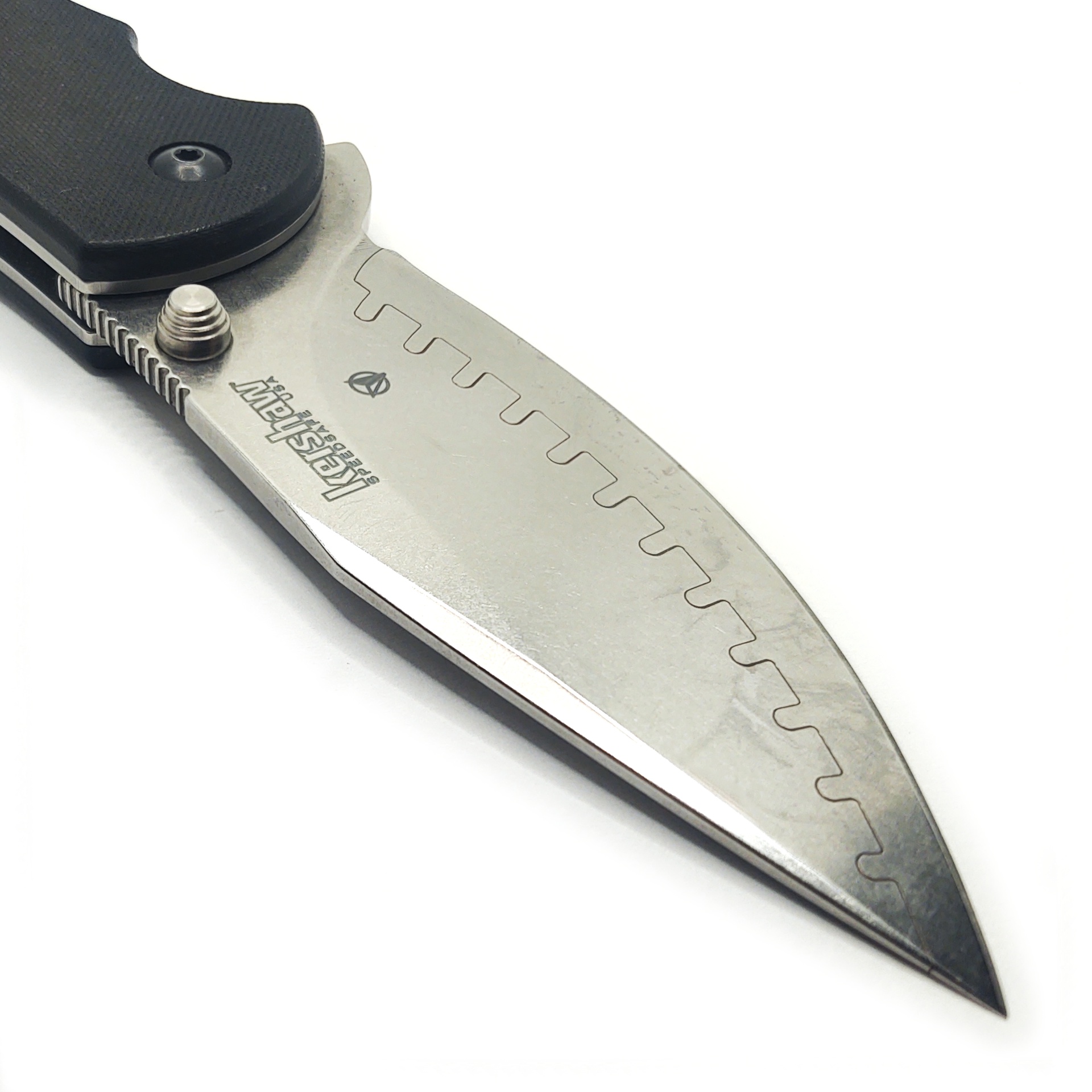
This is another Tim Galyean design like the Junkyard Dog, and that's a knife that this'll inevitably draw a lot of comparisons to. They both share pretty similar design philosophies and identical construction techniques, although the Rake is smaller and is also has Kershaw's "Speedsafe" spring assist mechanism whereas the Junkyard Dog doesn't.
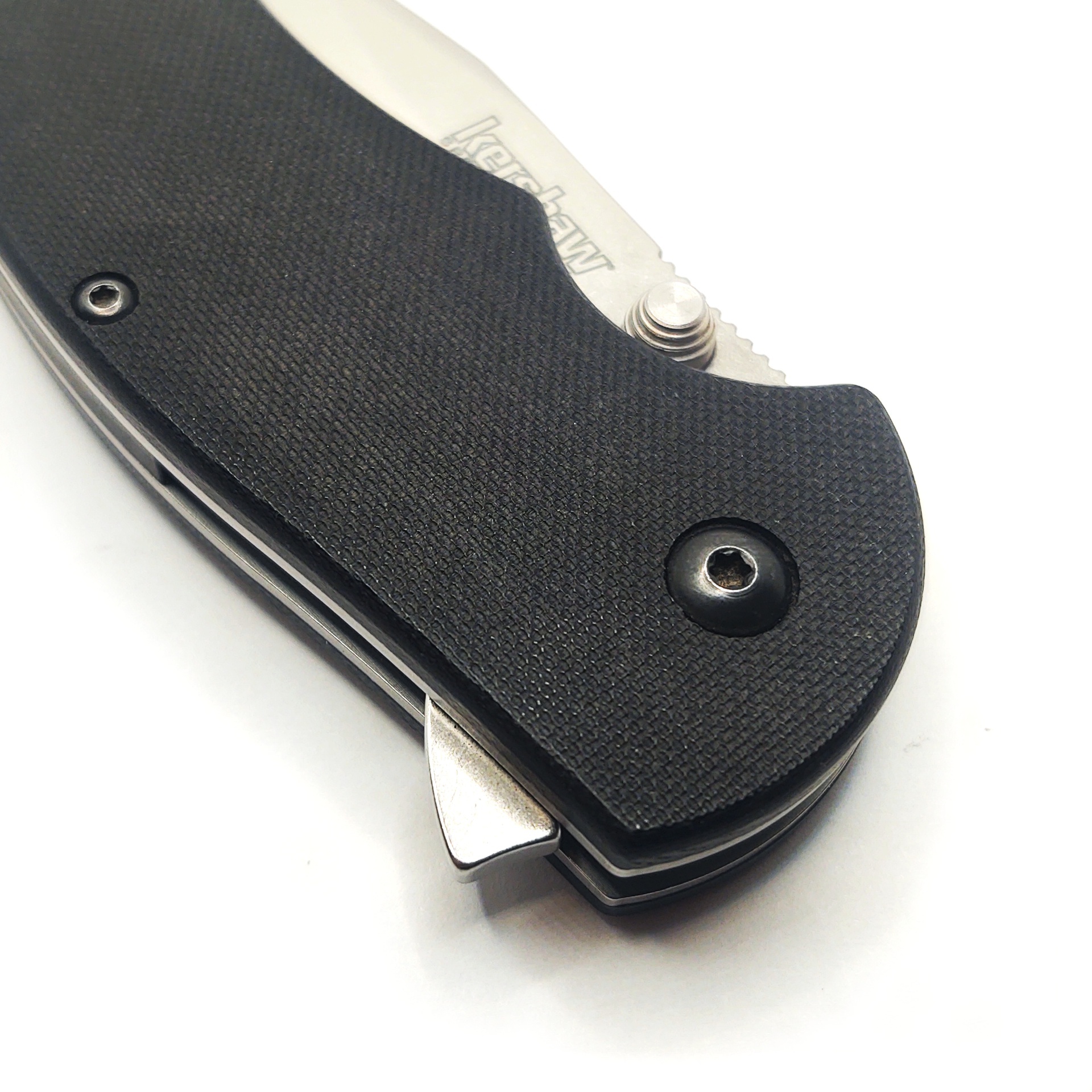
The Rake can be opened either via the flipper or with its dual thumb studs, and is a true liner locker with steel liners on both sides, overlaid with G10 scales. It's a hefty 162.6 grams (5.73 ounces) and just about 8" long open. The blade is 3-1/2" long with about a 3-3/8" usable edge, 0.120" thick, with a very upswept almost scimitarlike profile. The blade is very broad and the curve in it makes the closed knife even more so: About 1-5/8" across, all told at the widest point.
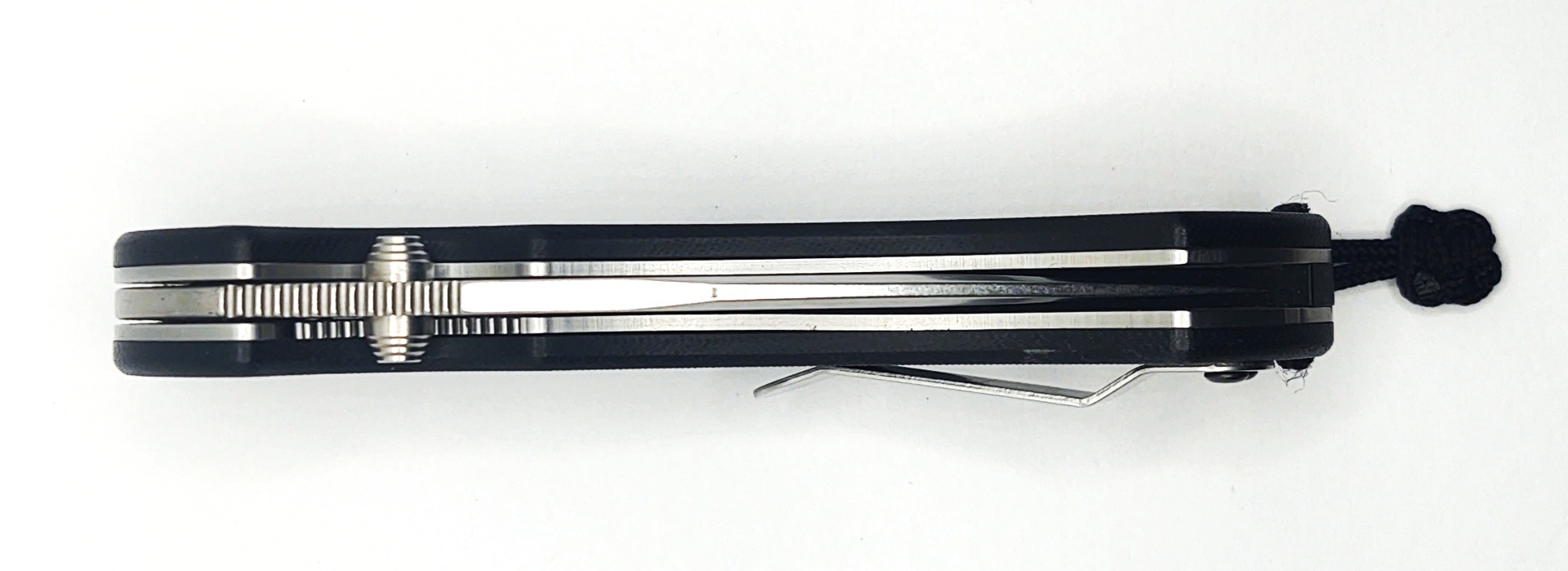
That doesn't necessarily translate to thickness, though, and the Rake is 0.537" in cross section not including the clip. Not surprisingly, almost exactly the same a the Junkyard Dog (that's just over half an inch, like 17/32").
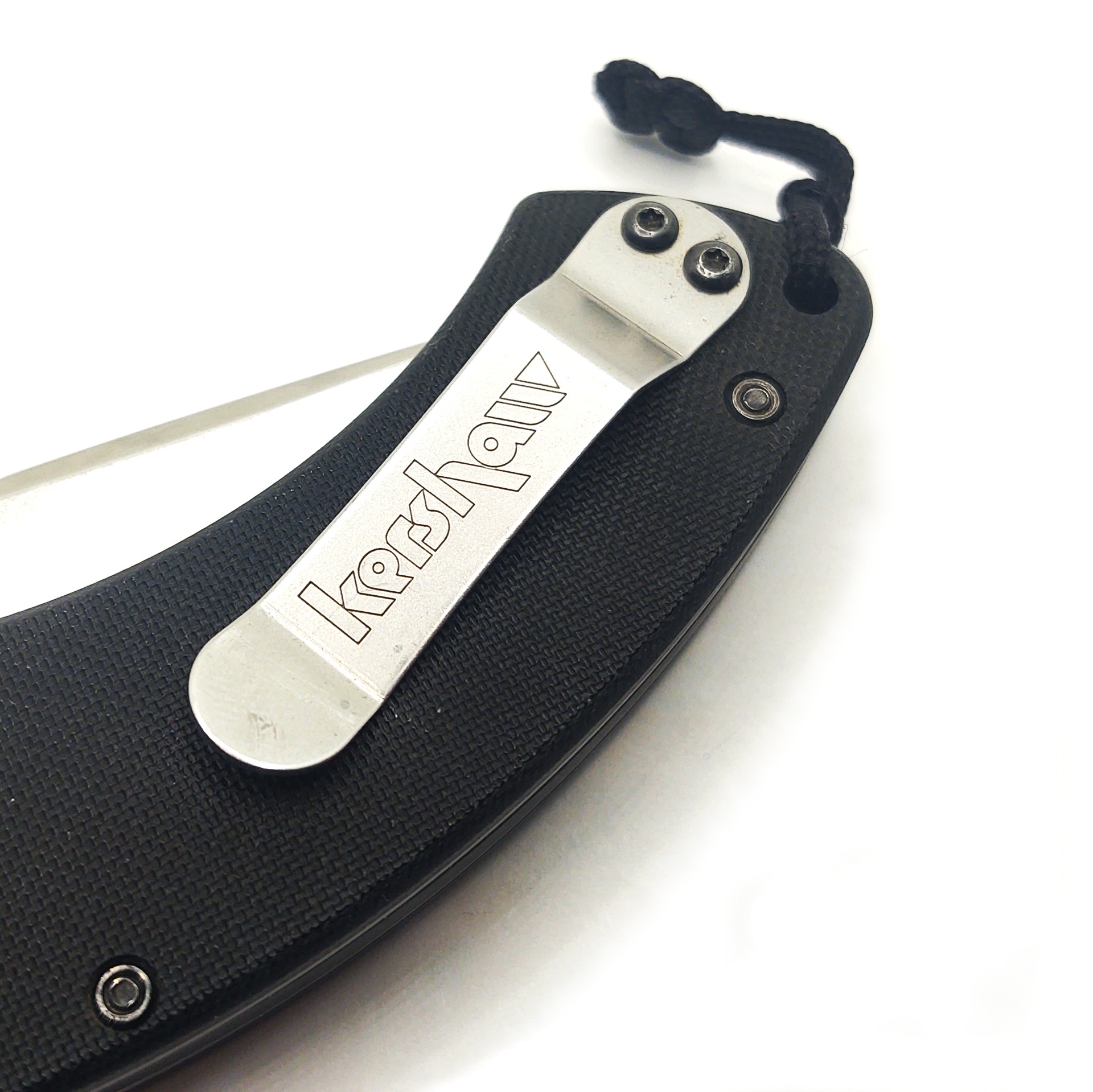
There's a lot to recommend the Rake for, despite its quirks. Fast snappy deployment, ambidextrous, rugged, and well built. It is not a svelte knife for people with small pockets, though, nor one that's unlikely to attract comment if you bust it out in public.
One thing I don't like about it is the clip, which is inferior to the one on the Junkyard Dog. It's reversible, at least, but it's kind of small and where it's positioned plus the pronounced boomerang curve in the knife when it's closed makes fishing it out of your pocket more of a fiddle than you'd think. That's why it has that tiny braided lanyard on it in all my photos.
In lieu of a disassembly photo, because I can't be bothered, here's one of how it rides instead.
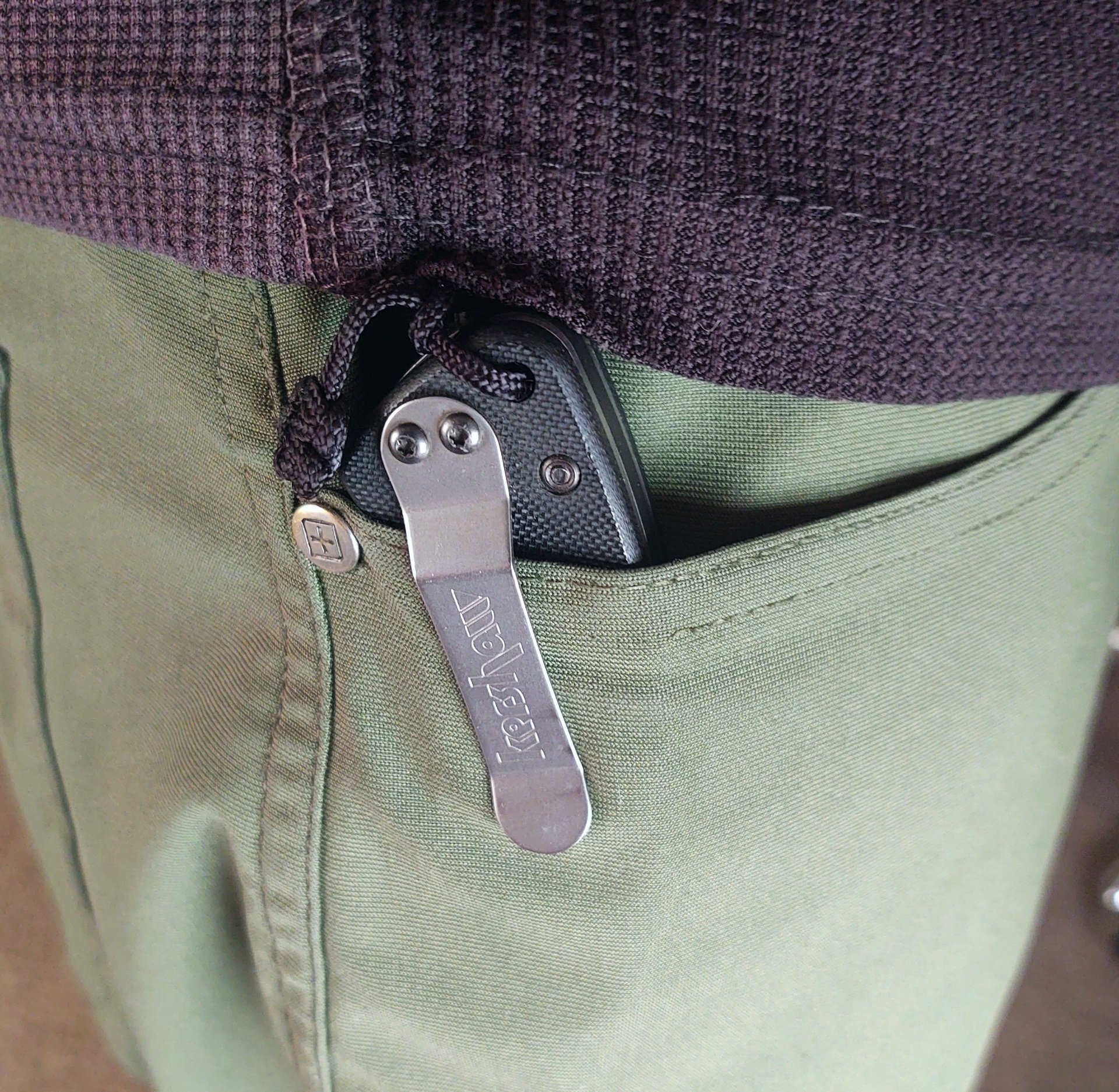
Compared to some of its brothers. It is noticeably larger than the CQC-6K (left) but shorter than the Junkyard Dog (right).
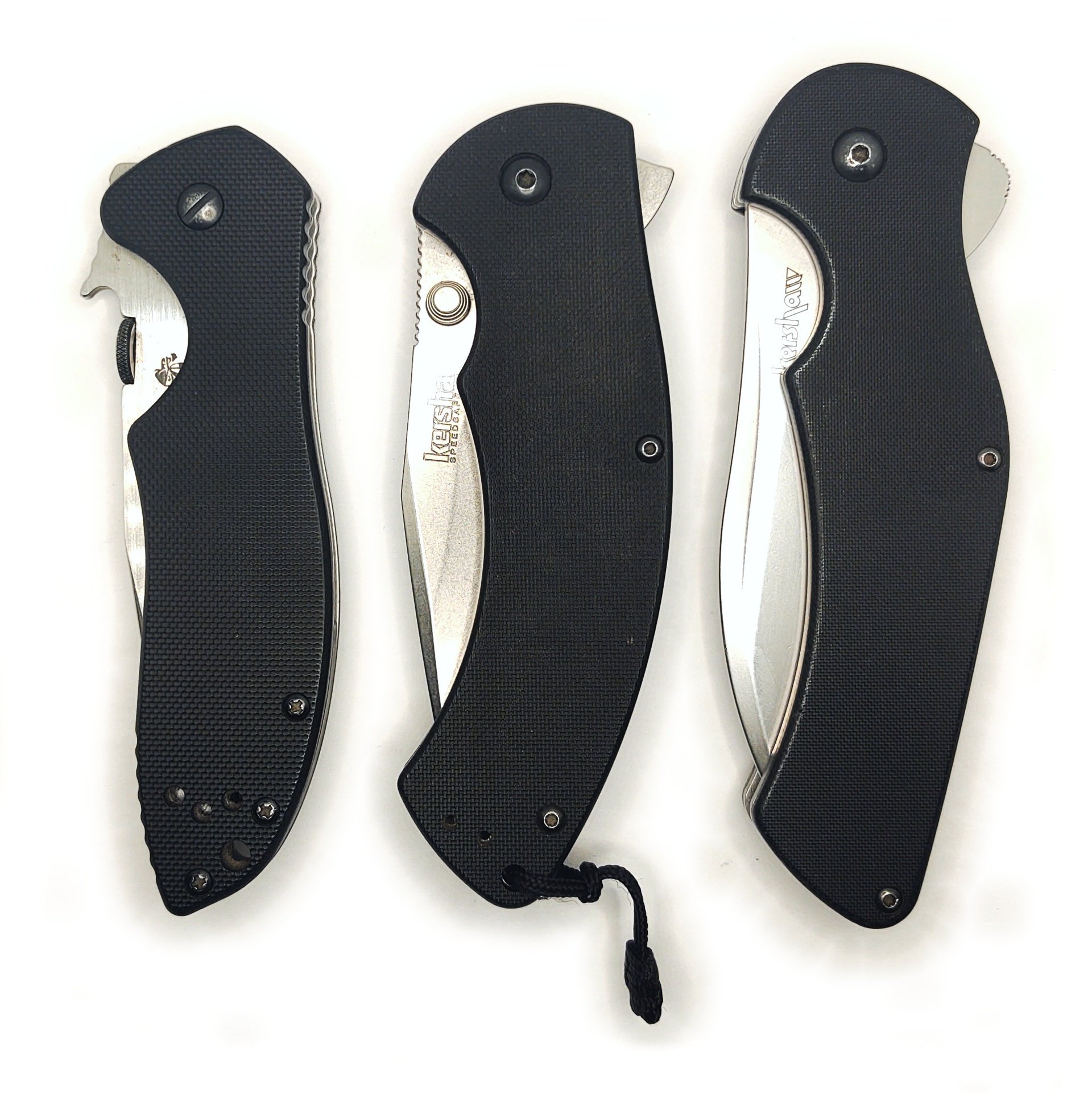
The Inevitable Conclusion
The Rake a very usable and well thought out design -- possibly minus the clip -- and if you want a big stout knife it's hard to go wrong with it. The pronounced curve and belly makes it a great slicer even for camp food prep, if you're into that sort of thing, while not being a dainty little fillet knife lookin' thing that feels like it'll break the minute it touches some bark.
It's so competent, in fact, that it's really tough to come up with anything funny to say about it. Other than the name, anyway. Why's it named after a gardening implement?
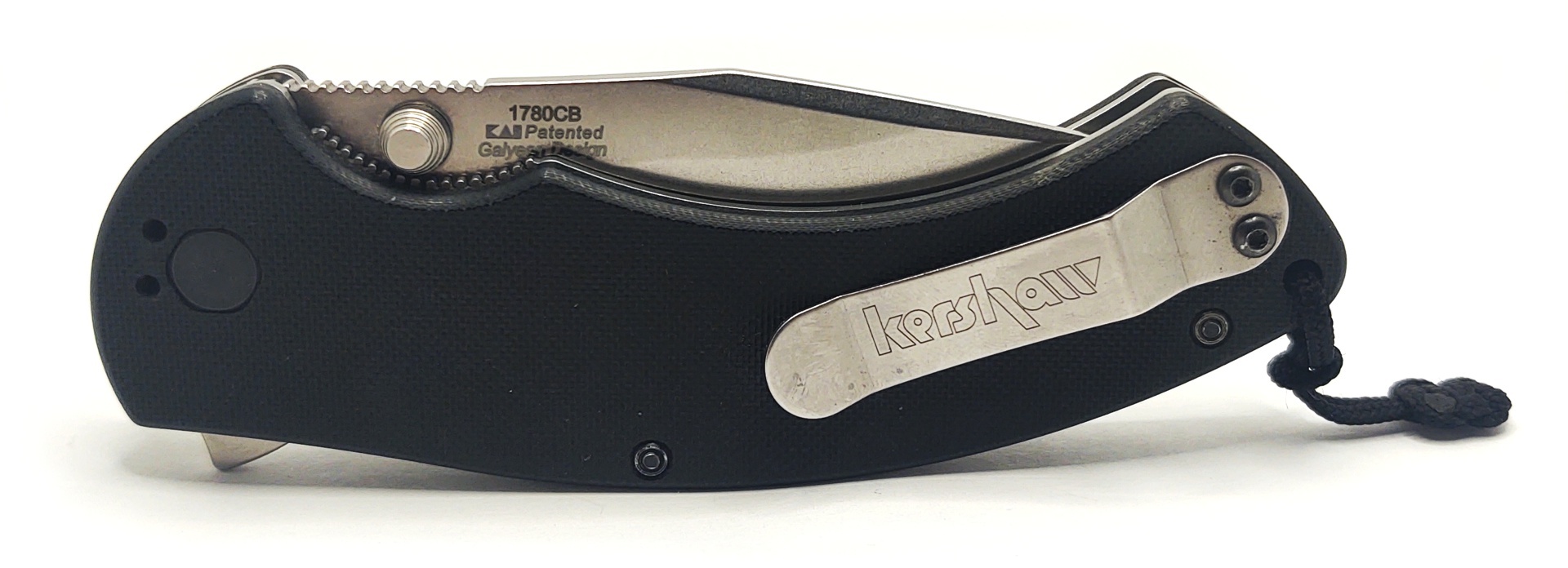
Doesn't rake have a slang definition related to debauchery or a lack of self-control? Not sure that helps at all as that sounds even worse. My guess though is it is one of the verb usages: to move swiftly over a surface or to scratch
I find myself not carrying any assisted-open knives anymore. People think they're automatic knives, end up being unable to close them properly when borrowed, and generally the knives just raise too many eyebrows. I used to carry the Scallion to work because of blade length restrictions but since the Baby Banter and the Maileah showed up, I don't really feel the urge.